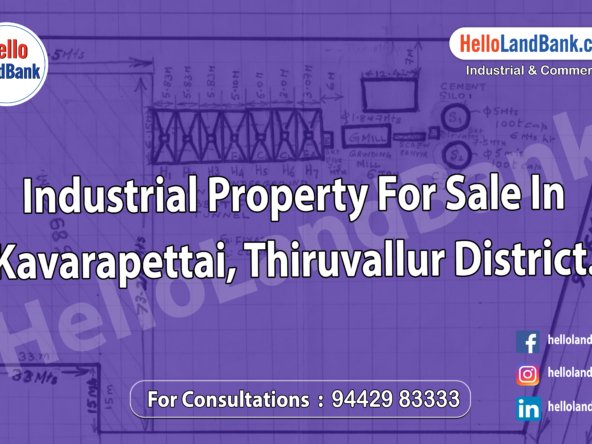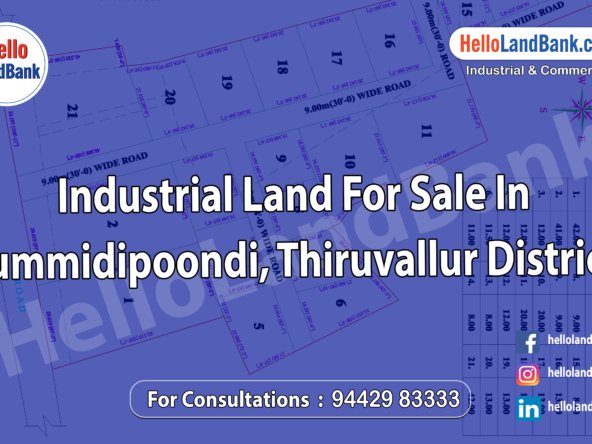Addressing utility requirements on industrial land involves planning, designing, and implementing utility infrastructure to support industrial operations, building systems, and occupant needs. Here are steps to address utility requirements on industrial land:
1. Utility Assessment and Analysis:
- Conduct a utility assessment to identify existing utility infrastructure, service providers, capacities, and limitations on the industrial site. Evaluate utility requirements for water supply, sewer systems, stormwater drainage, electrical power, natural gas, telecommunications, and other essential utilities needed to support industrial operations and facilities.
2. Utility Master Planning:
- Develop a utility master plan outlining the long-term utility infrastructure needs, priorities, and strategies for the industrial land development project. Consider factors such as projected water demand, wastewater generation, electrical load requirements, utility service areas, and future expansion needs when planning utility infrastructure investments and improvements.
3. Utility Assessment and Analysis:
- Conduct a utility assessment to identify existing utility infrastructure, service providers, capacities, and limitations on the industrial site. Evaluate utility requirements for water supply, sewer systems, stormwater drainage, electrical power, natural gas, telecommunications, and other essential utilities needed to support industrial operations and facilities.
4. Utility Master Planning:
- Develop a utility master plan outlining the long-term utility infrastructure needs, priorities, and strategies for the industrial land development project. Consider factors such as projected water demand, wastewater generation, electrical load requirements, utility service areas, and future expansion needs when planning utility infrastructure investments and improvements.
5. Utility Coordination and Collaboration:
- Coordinate with utility providers, municipalities, regulatory agencies, and other stakeholders to assess utility availability, service capacities, permitting requirements, and connection procedures for industrial land development projects. Collaborate with utility companies to determine service options, feasibility, costs, and timelines for utility connections, upgrades, or expansions.
6. Water Supply Systems:
- Design and implement water supply systems to provide potable water for industrial facilities, process water for manufacturing operations, and fire protection systems for property protection. Install water supply lines, fire hydrants, backflow prevention devices, and water meters to meet water demand requirements and comply with regulatory standards.
7. Sewer Systems and Wastewater Management:
- Design and install sewer systems to convey wastewater, sanitary sewage, and industrial effluent from industrial facilities to wastewater treatment facilities or disposal points. Implement sewer lines, manholes, lift stations, grease traps, and pretreatment systems to manage wastewater discharge and comply with environmental regulations.
8. Stormwater Management:
- Develop stormwater management systems to control runoff, prevent flooding, and protect water quality on the industrial site. Implement stormwater drainage infrastructure such as detention ponds,retention basins, culverts, swales, and erosion control measures to manage stormwater runoff, mitigate erosion, and minimize pollutant discharge into water bodies.
9. Electrical Distribution Networks:
- Design and construct electrical distribution networks to provide reliable and efficient electrical power to industrial facilities, equipment, and systems. Install electrical service lines, transformers, switchgear, distribution panels, wiring, and lighting systems to meet electrical load requirements, ensure voltage stability, and comply with electrical codes and safety standards.
10. Natural Gas Distribution:
- Install natural gas distribution systems to supply industrial facilities with clean and cost-effective energy for heating, cooling, and process applications. Coordinate with natural gas suppliers to install gas mains, service lines, meters, regulators, and safety devices to deliver natural gas safely and efficiently to industrial users.
11. Telecommunications Infrastructure:
- Implement telecommunications infrastructure to support data, voice, and video communications for industrial operations, business functions, and connectivity needs. Install fiber optic cables, network infrastructure, telecommunications rooms, and communication systems to provide high-speed internet access, telephone service, and network connectivity for industrial users.
12. Utility Management and Operations:
- Develop utility management plans, maintenance schedules, and operations protocols to ensure the reliable operation, maintenance, and sustainability of utility infrastructure on the industrial site. Implement preventive maintenance programs, asset management practices, and emergency response procedures to address utility disruptions, outages, and service interruptions effectively.
By addressing utility requirements systematically and proactively, industrial land developers can ensure the availability, reliability, and functionality of essential utility services to support industrial operations, meet regulatory requirements, and facilitate sustainable development on industrial land. Collaboration with utility providers, regulatory agencies, and professional consultants is essential for effectively addressing utility requirements and optimizing utility infrastructure investments for industrial land development project.




